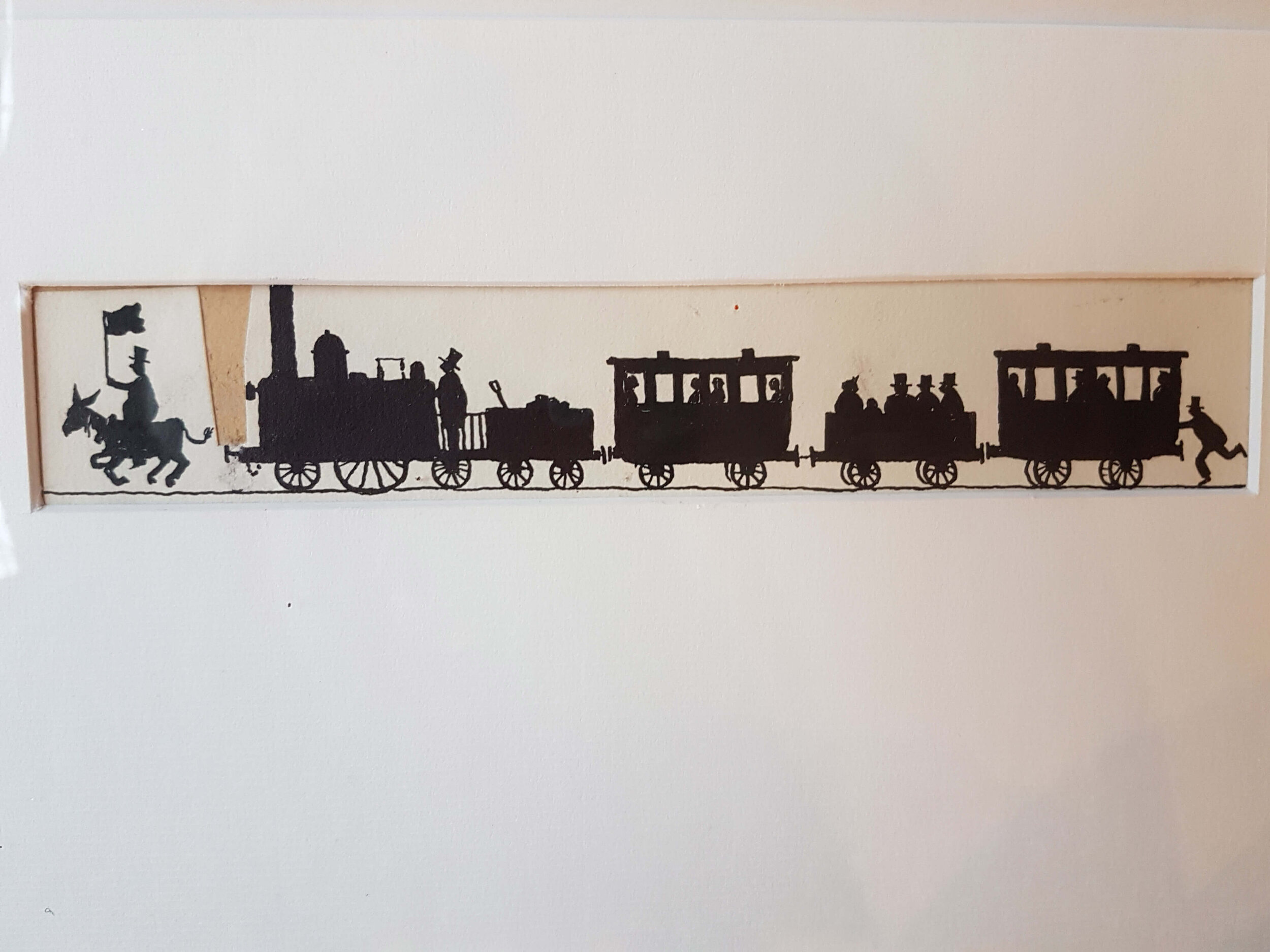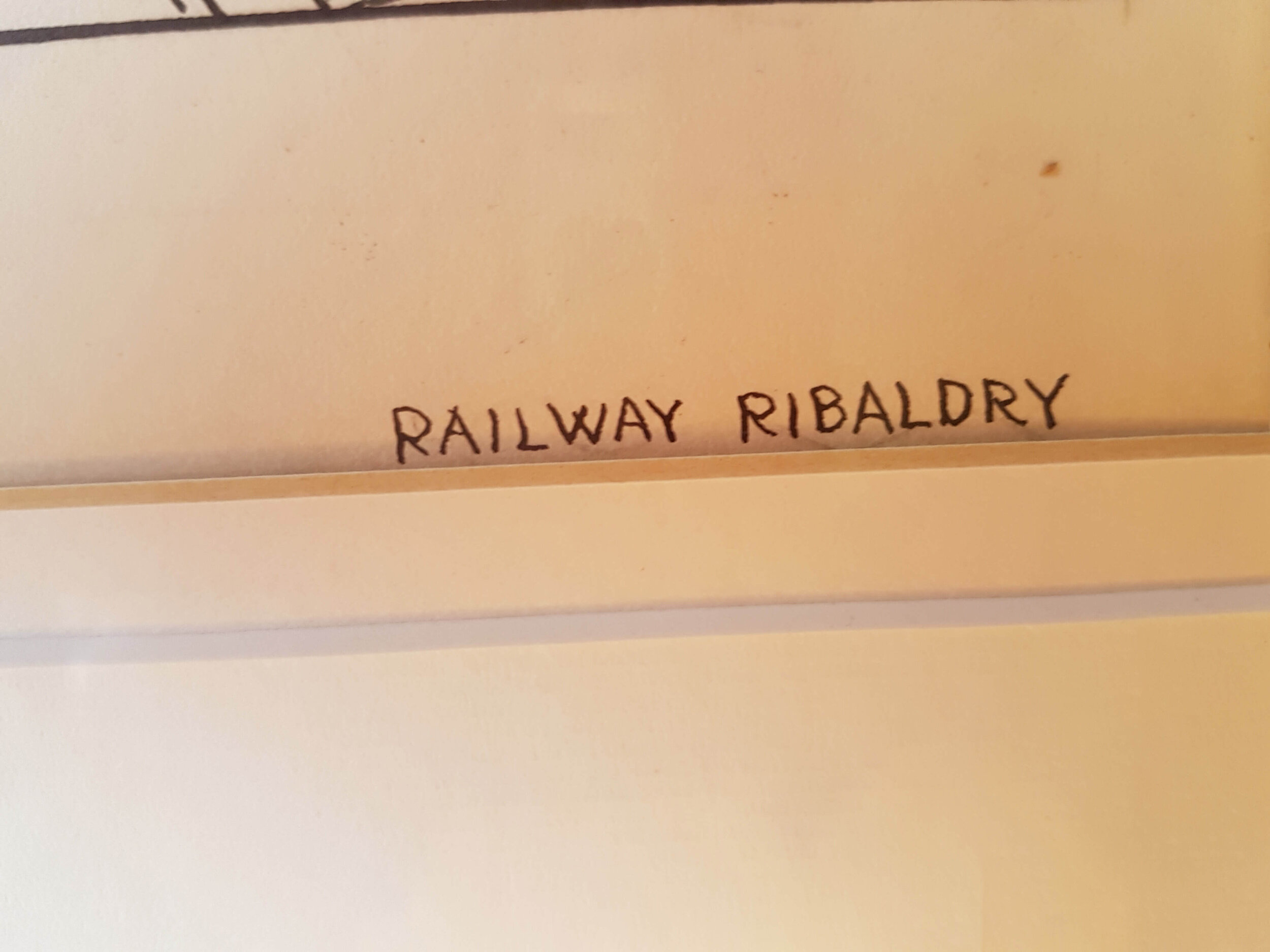 Image 1 of 7
Image 1 of 7

 Image 2 of 7
Image 2 of 7

 Image 3 of 7
Image 3 of 7

 Image 4 of 7
Image 4 of 7

 Image 5 of 7
Image 5 of 7

 Image 6 of 7
Image 6 of 7

 Image 7 of 7
Image 7 of 7








William Heath Robinson, 'Boring The First Tunnel With An Early Type Of Rotary Excavator, And The Red Flag', c. 1935
William Heath Robinson, (British, 1872-1944)
Boring The First Tunnel With An Early Type Of Rotary Excavator, And The Red Flag', c. 1935 (railway ribaldry was published in this year)
The former signed 'W. Heath Robinson (lower left) and inscribed with title (lower left and right)
The former to mount 14 X 10.1/4in. (35.5 X 26cm.)
The latter 1.1/2 X 8.1/2in. (3.8 X 21.6 cm.)
Literature: Railway Ribaldry, first published by the Great Western Railway, Paddington, 1935.
William Heath Robinson was an English cartoonist and illustrator best known for drawings of ridiculously complicated machines for achieving simple objectives. During the First World War, he drew large numbers of cartoons, depicting ever-more unlikely secret weapons being used by the combatants. In the UK the term "Heath Robinson" entered popular language during this time as a description of any unnecessarily complex and implausible contrivance. Its continuing popularity was undoubtedly linked to Second World War Britain's shortages and the need to "make do and mend". In the course of his work, Robinson also wrote and illustrated three childrens books including The Adventures of Uncle Lubin (1902) which is regarded as the genesis of his depiction of unlikely machines. The inventions he drew were frequently powered by steam boilers or kettles, heated by candles or a spirit lamp and usually kept running by balding, bespectacled men in overalls. There would be complex pulley arrangements, threaded by lengths of knotted string. One of his most famous series of illustrations accompanied the first Professor Branestawm book written by Norman Hunter. The stories provided a perfect backdrop for Robinson's drawings. One of the automatic analysis machines built for Bletchley Park during the Second World War to assist in the decryption of German message traffic was named "Heath Robinson" in his honour. He died in September 1944 during the Second World War and is buried in East Finchley Cemetery. The Heath Robinson Museum in Pinner opened in October 2016 to house a collection of nearly 1,000 original artworks owned by The William Heath Robinson Trust. In the Wallace and Gromit movies, Wallace often invents Heath Robinson-like machines, with some inventions being direct references.
William Heath Robinson, (British, 1872-1944)
Boring The First Tunnel With An Early Type Of Rotary Excavator, And The Red Flag', c. 1935 (railway ribaldry was published in this year)
The former signed 'W. Heath Robinson (lower left) and inscribed with title (lower left and right)
The former to mount 14 X 10.1/4in. (35.5 X 26cm.)
The latter 1.1/2 X 8.1/2in. (3.8 X 21.6 cm.)
Literature: Railway Ribaldry, first published by the Great Western Railway, Paddington, 1935.
William Heath Robinson was an English cartoonist and illustrator best known for drawings of ridiculously complicated machines for achieving simple objectives. During the First World War, he drew large numbers of cartoons, depicting ever-more unlikely secret weapons being used by the combatants. In the UK the term "Heath Robinson" entered popular language during this time as a description of any unnecessarily complex and implausible contrivance. Its continuing popularity was undoubtedly linked to Second World War Britain's shortages and the need to "make do and mend". In the course of his work, Robinson also wrote and illustrated three childrens books including The Adventures of Uncle Lubin (1902) which is regarded as the genesis of his depiction of unlikely machines. The inventions he drew were frequently powered by steam boilers or kettles, heated by candles or a spirit lamp and usually kept running by balding, bespectacled men in overalls. There would be complex pulley arrangements, threaded by lengths of knotted string. One of his most famous series of illustrations accompanied the first Professor Branestawm book written by Norman Hunter. The stories provided a perfect backdrop for Robinson's drawings. One of the automatic analysis machines built for Bletchley Park during the Second World War to assist in the decryption of German message traffic was named "Heath Robinson" in his honour. He died in September 1944 during the Second World War and is buried in East Finchley Cemetery. The Heath Robinson Museum in Pinner opened in October 2016 to house a collection of nearly 1,000 original artworks owned by The William Heath Robinson Trust. In the Wallace and Gromit movies, Wallace often invents Heath Robinson-like machines, with some inventions being direct references.
